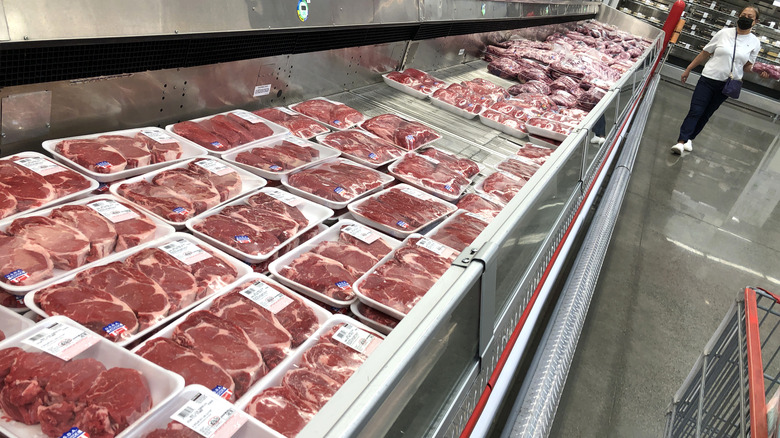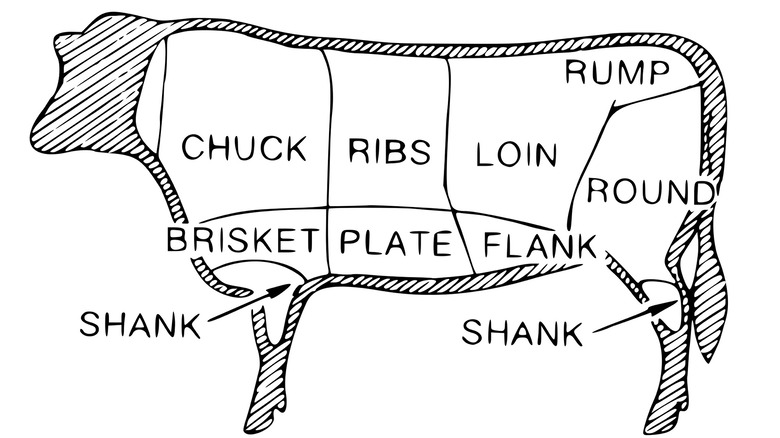Forequarter Vs. Hindquarter Primal Beef Cuts: What's The Difference?
When you hear the term "primal cut" it might evoke images of your ancient neanderthal cousins. Or you might confuse it with prime cut, which the USDA uses to denote the highest-quality grade of beef. Primal cuts can be prime, but the term has a specific use of its own. Primal cuts are the first cuts made in the butchering process, immediately after the slaughter, according to Snake River Farms.
There are eight primal cuts — flank, loin, round, shank, brisket, chuck, rib, and plate — which are then broken down into subprimal cuts, per S. Clyde Weaver. Examples of subprimal cuts include top round (taken from the round), short loin (taken from the loin), and shoulder clod (taken from the chuck).
The subprime cuts can then be broken down further, short loin produces porterhouse and T-bone steaks, resulting in the dozens of cuts you find at the butcher counter. The primal cuts can also be grouped into two larger segments — the forequarter and the hindquarter. These labels are actually a key indicator of how you should cook your beef.
The forequarter has less fat, but more bone and sinew
The body of a cow is divided into forequarter and hindquarters between the 12th and 13th ribs, per Britannica. The forequarter encompasses the primal cuts of chuck, rib, brisket, and plate while the hindquarters encompass the loin, round, and flank. As for the shanks, they come from the cow's legs, so there are two in the forequarters and two in the rear (via S. Clyde Weaver).
Wholesale meat supplier Miami Beef explains that the forequarters are more involved in the cow's movements, so they are leaner and contain more bones and connective tissue. This makes forequarter cuts tougher in general, and better suited for slow-cooking. The hindquarter cuts, on the other hand, have less sinew and better marbling.
The hindquarters produce prized and pricey steaks such as filet mignon, porterhouse, T-bone, and New York Strip, all of which come from the loin. These cuts are generally better for grilling over high heat. There are certainly exceptions to these rules though, most notably ribeye, a forequarter cut with excellent marbling ideal for the searing-hot grill, and the shanks, both of which should be treated as hindquarter cuts and slow-cooked.

